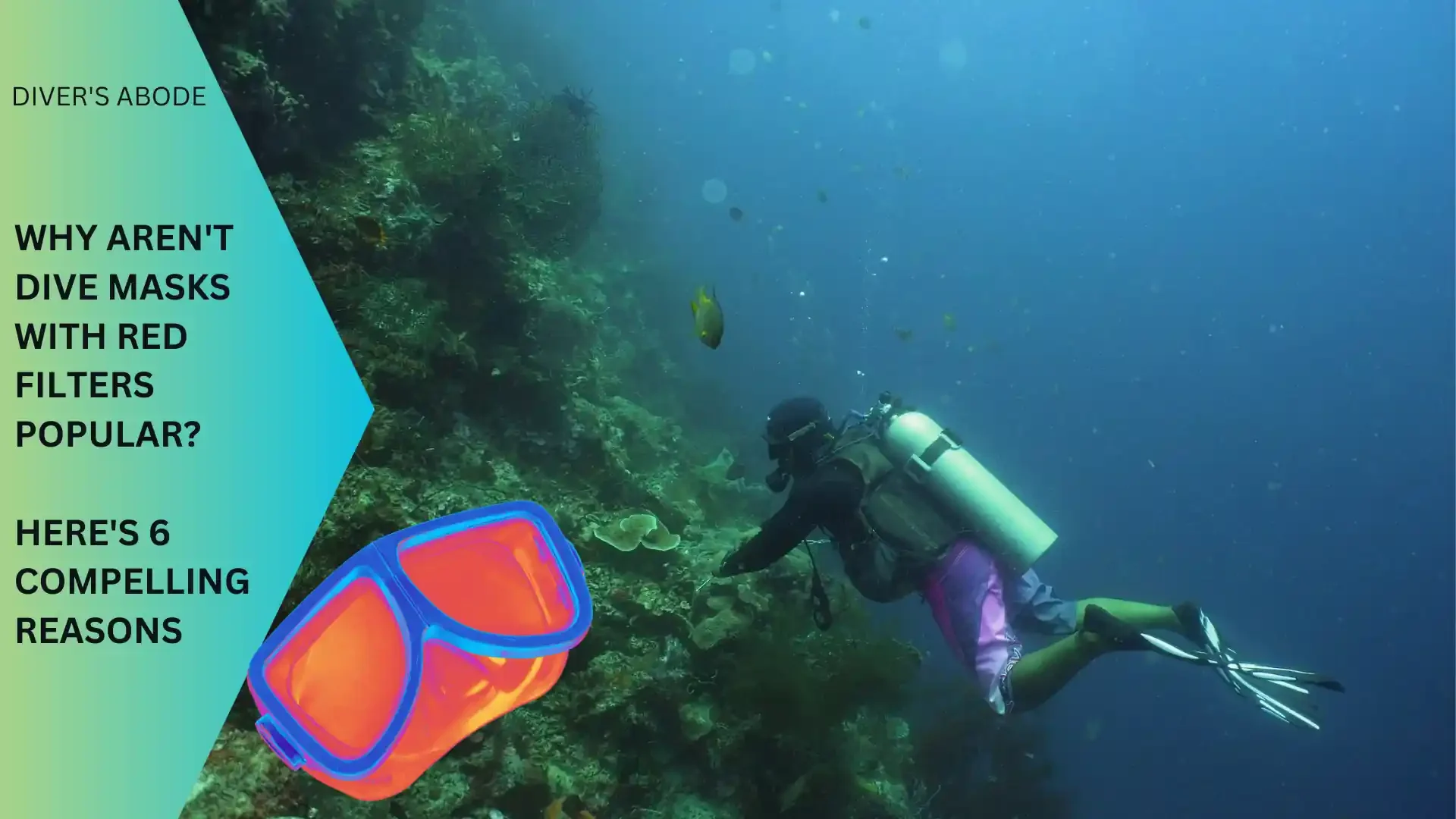In their quest to take in the scenic beauty of the underwater world in all its glory, divers can go to any lengths. But one problem that looms large is the loss of vibrant red color with depth which makes everything appear ghoulish and unpleasant underwater.
This occurs due to an optical phenomenon known as selective spectral absorption that makes colors get filtered out one by one with depth, red being the first victim. Red light effectively disappears at a mere depth of 15 feet.
This greatly reduces the visibility experience of an average scuba diver by sucking the soul out of the underwater environment. So, it’s natural for divers to look for something that can ‘restore’ the red in the underwater color palette.
A red filter dive mask helps overcome the bluish hue of the water and makes for pleasant wide panoramic views of the ocean.
For underwater photographers, a red-tinted dive mask is anything short of a blessing. It helps them view the underwater world the same way their camera with a red lens does.
Table of Contents
5 Reasons Why a Red-Tinted Dive Mask Isn’t the Solution

With so many benefits of owning a red-tinted scuba mask, it begs the question: why aren’t they as popular as they seemingly deserve to be? Upon taking a closer look, the drawbacks of a red dive mask far outweigh its benefits.
1. They Are Ridiculously Expensive
Compared to standard dive masks, very few reliable dive masks with a red filter are available in the market. The few available ones have a price tag ranging in multiples of a standard $40 scuba mask. The price doesn’t justify the added feature in my opinion.
Regular scuba gear is already quite expensive as is, adding a fancy dive mask to the list isn’t everyone’s cup of tea. Investing in a good dive light will be a better choice in the long run.
If you are still inclined to buy one I would suggest checking out the SeaDive Eagleye RayBlocker Dive Mask with rose-tint anti-glare. It also comes with a purge valve to prevent issues with a leaking dive mask.
2. The Red Tint Rocks the Red but Mutes the Rainbow
We need to understand one thing. What tinted filters do is absorb and amplify only the color corresponding to the tint. As such, a red-tinted dive mask is discarding the non-red colors especially blue and green so that the little tiny bit of red light that is remaining is a little more noticeable.
So instead of a bearable green and blue hue, you’re are left with a bloody one with no means to adjust the intensity. The filter works both ways and makes your face appear shrouded to your dive buddy.
3. Our Built-In Color Correction Mechanism Is Enough
We greatly underestimate the brilliance of the human body. Our eyes have a built-in white balance compensation which makes up for lost color by filling in the gaps. So even if a red coral reef appears bluish underwater our eyes can perceive its original red color.
And unlike a red filter dive mask, our color correction system does the job without completely diminishing the other colors. Our eyes do a better job at color correction than a camera. Ever wondered why the underwater photos you clicked look so much paler and bluish than you remember them?
4. It Has Very Limited Application Outside of Photography
If you’re an underwater photographer who wants to envision your surroundings like the red lens of your camera, by all means, go for it. Even snorkelers staying in shallow waters (~10 feet) will find these masks extremely quirky, especially around coral reefs.
But apart from that, from a recreational diving perspective, there isn’t much application of a rose-tinted dive mask. Beyond 15 feet the red color is essentially gone from the environment. At average recreational diving depths of 25 feet, with no red to absorb, the filter will make your surroundings appear unnecessarily dark and gloomy.
Not to mention, in murkier waters where less light is passing through, red filters can quickly become your worst visual nightmare.
5. A Dive Light Does The Job Better
Water molecules filter the high wavelength colors of sunlight like red and orange from reaching the depths. This lack of light cannot be corrected by attaching selective absorption filters to your dive mask.
So what’s a better way to reintroduce the lost colors than igniting an artificial light source at your current depth? Yes, I’m talking about dive torches.
If you want to see the true color of the ocean during your dive, learn to carry a dive flashlight of good intensity.
Not at All Needed but Having One Won’t Hurt
From a cost-to-benefit ratio, a rose-tinted dive mask doesn’t bring much to the table. But if you’re a snorkeler or underwater photographer having one might just make your experience better. In my experience, these masks become obsolete beyond a depth of 10-15 feet.
For the experimental divers with a deep pocket, by all means, get yourself one, experience it first-hand, and decide for yourself if it is worth it or not. At the end of the day, our experiences may not be the same after all.
